Factfulness
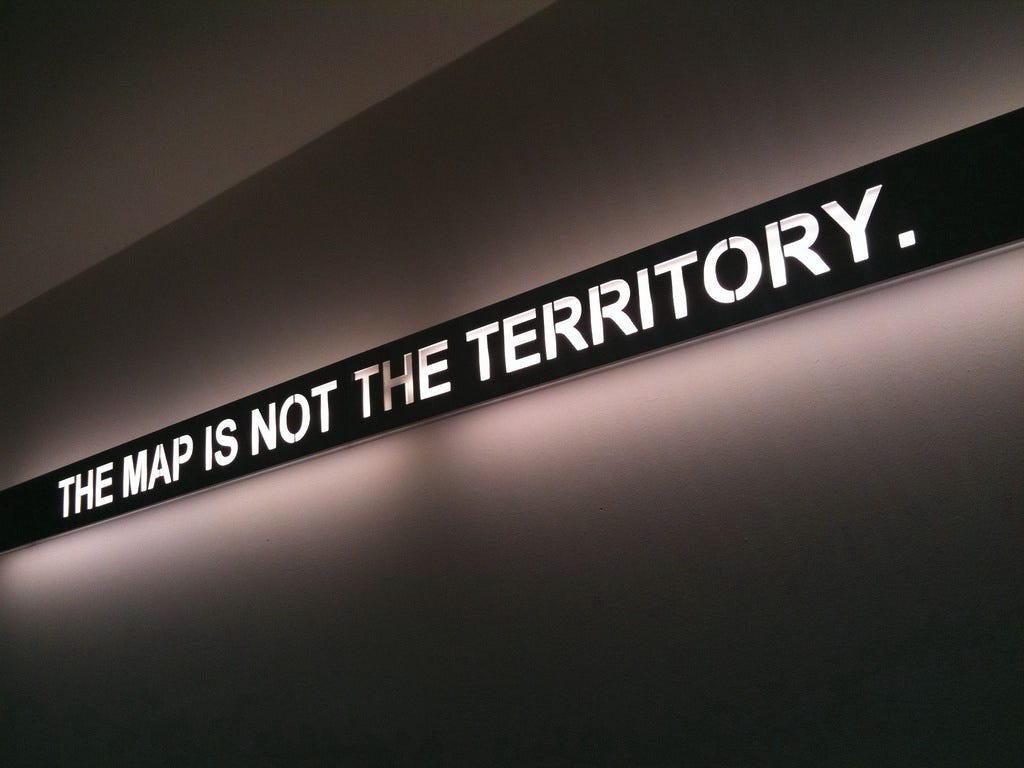
The goal of this article is to explain why adding a 5th level to Hans Rosling’s 4-level income “map” is both more accurate and will vector us towards a more positive future. 👇
Instead of “Developing” and “Developed”, 4 Income Levels
In Hans Rosling’s book Factfulness, he presents a group of heuristics that help us see the world in a more “fact-based” way. One of these frames involves breaking the world into four income levels instead of just developing/developed. Traditionally, we see the world like this:
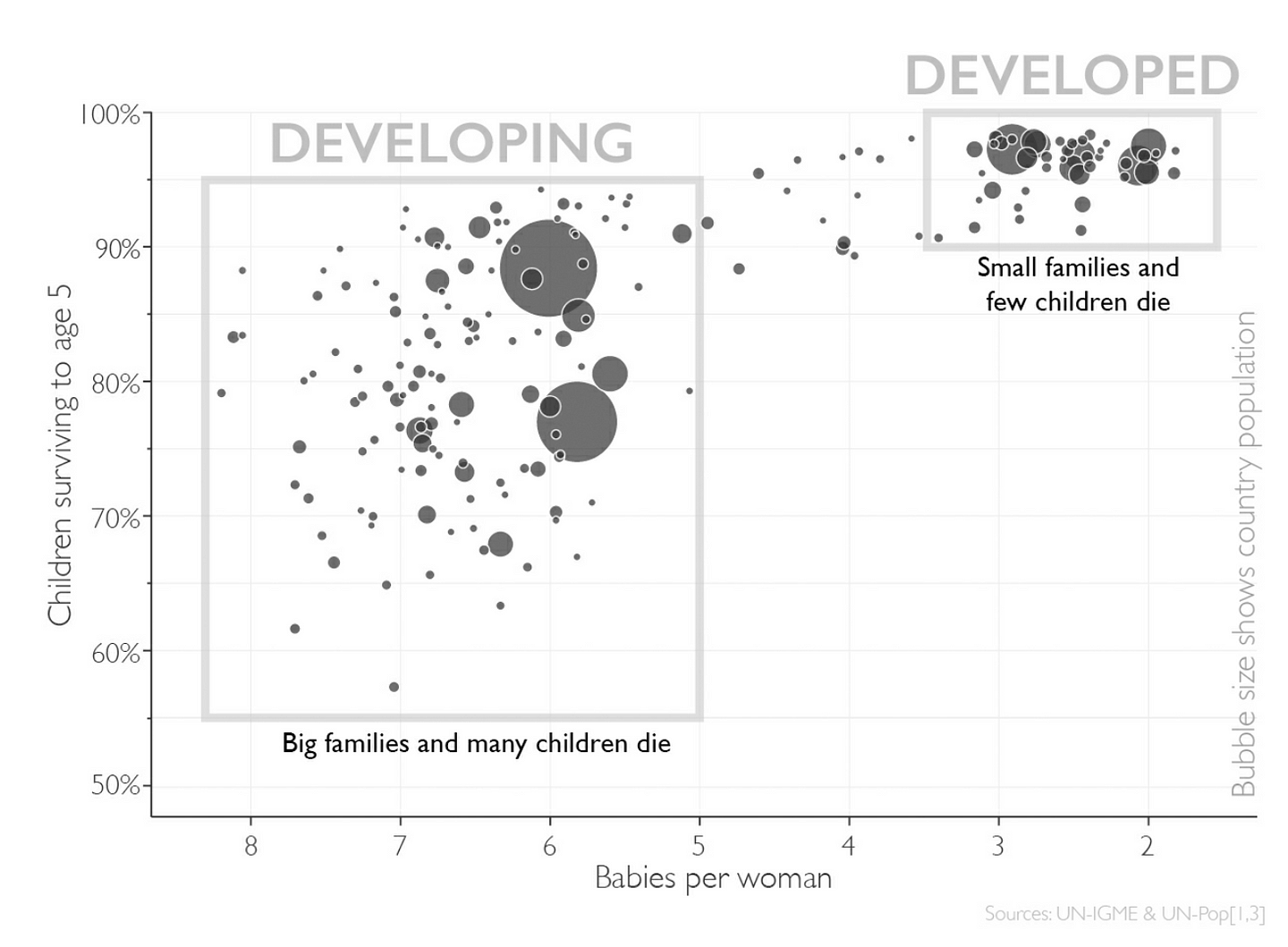
But actually, that graph is misleading—it’s from 1965! Here’s what it looks like today:
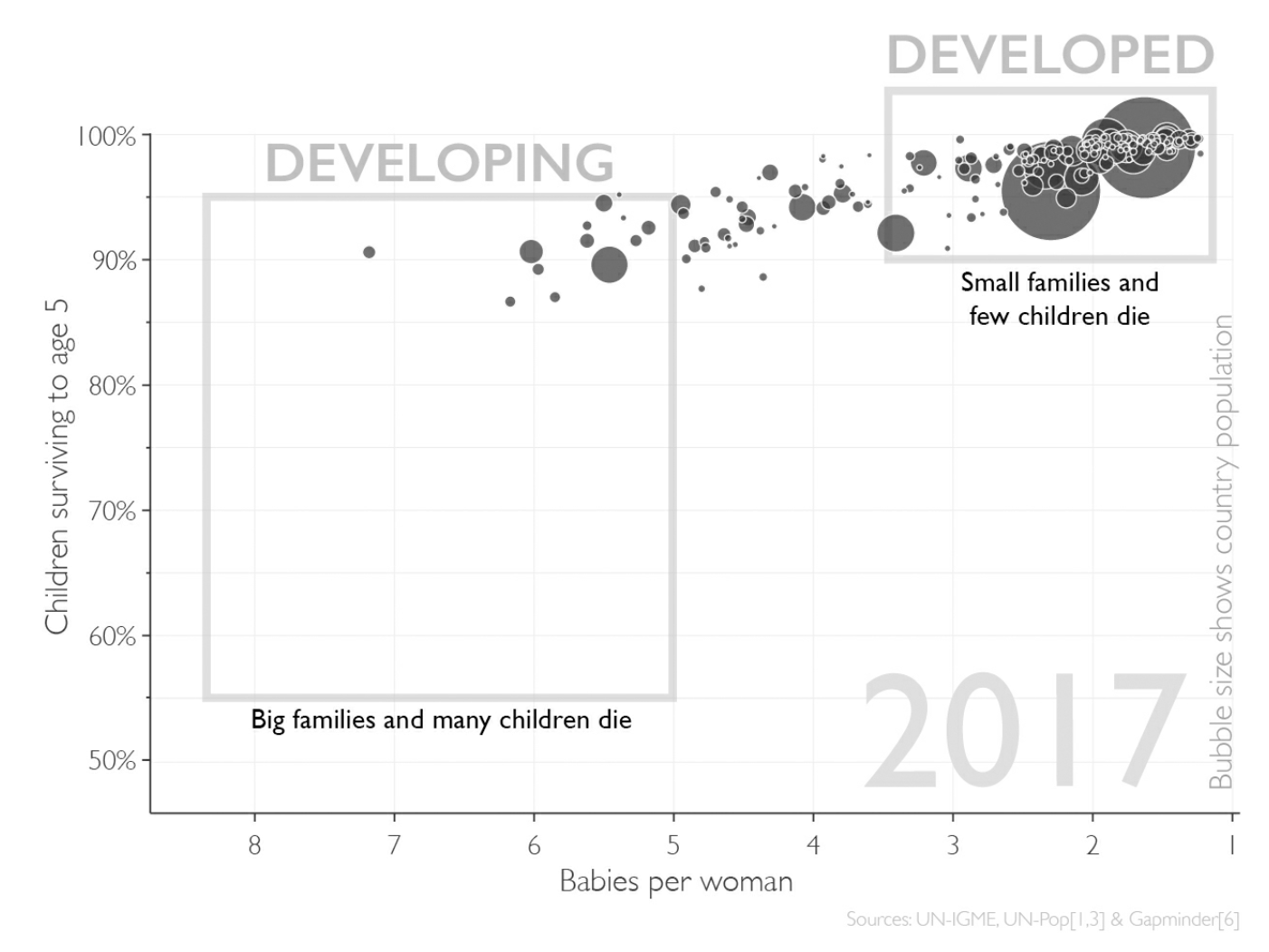
So if our developing/developed framework is out of date (it’s a bad map!), what should we use instead? Rosling proposes a 4-level model which breaks down the global population into levels based on income. The one billion people on Level 1 make $0–$2/day. The three billion people on Level 2 make $2–$8/day. The two billion people on Level 3 make $8–$32/day. And the one billion people on Level 4 make more than $32/day. This is all expressed in the simple picture below:

In addition to adding texture to the developing vs. developing binary, this 4-level framework adds texture to the extreme poverty vs. “not” binary:
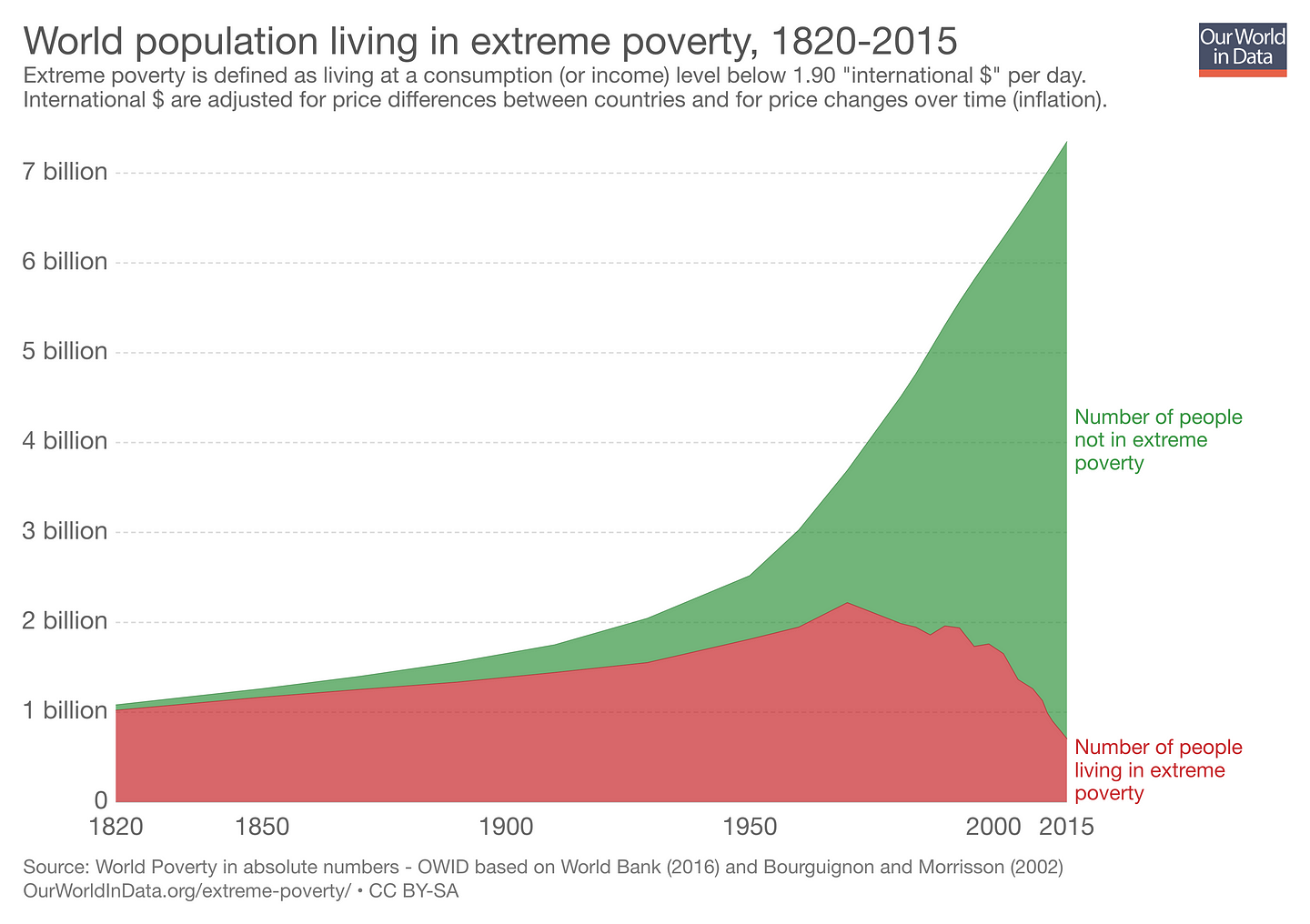
So instead, we can break the graph above into 4 levels, below.
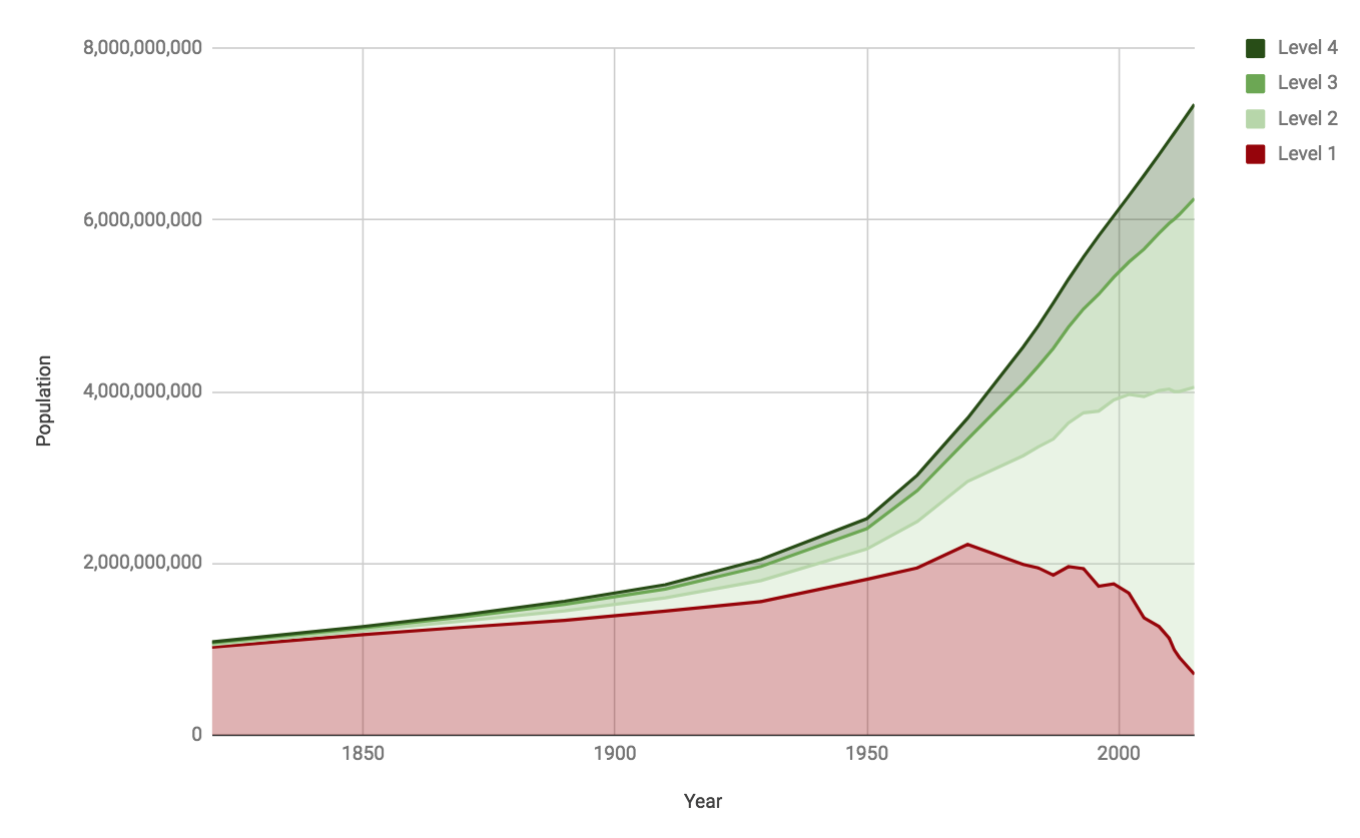
This 4-level breakdown is helpful because it more accurately reflects an individual’s actual life situation. (The map is not the territory, but this is closer.) i.e. You don’t just go from extreme poverty to hanging on a yacht. Rosling conceptualizes of it as a computer game:
Think of the four income levels as the levels of a computer game. Everyone wants to move from Level 1 to Level 2 and upward through the levels from there. Only, it’s a very strange computer game, because Level 1 is the hardest.
…Human history started with everyone on Level 1. For more than 100,000 years nobody made it up the levels and most children didn’t survive to become parents. Just 200 years ago, 85 percent of the world population was still on Level 1, in extreme poverty… It’s where the majority always lived, until 1966. Until then, extreme poverty was the rule, not the exception.
Level 5
Rosling takes our pixelated approximation (developing/developing) and gives it more texture (4 levels). Yay! The natural next question becomes: why just stop at 4 levels? Should there be more levels? Maybe 5? Or 10? I’d argue that there should be a Level 5, because we want to include a crucial inflection point that Rosling misses: after $120/day, we don’t get happier when we make more money.
Let’s dive into this a bit. We know that income is highly correlated with happiness. i.e. Money does buy you happiness. Every time you double your income, you get about .5 points happier (out of 10). See the graph below (note the log scale on the x axis):
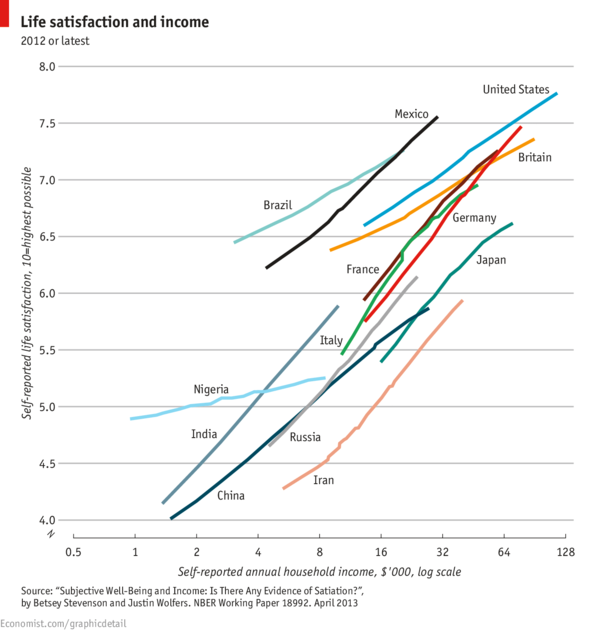
But, in addition to diminishing returns (the log scale), money only buys you happiness up to a point. After $45,000/year ($120/day), you don’t get happier when you make more money:
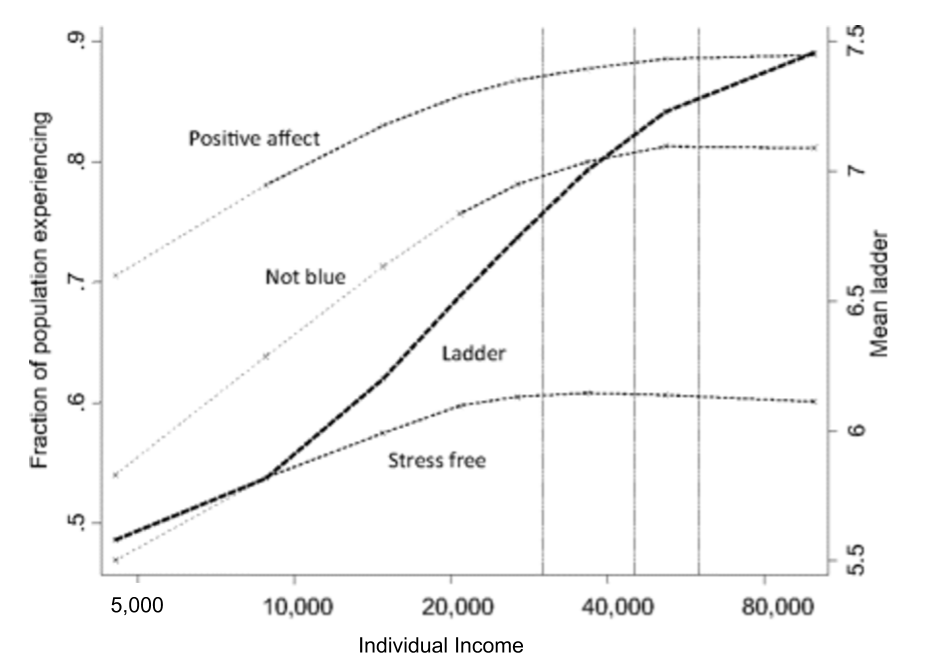
It’s hard to overstate how crazy this is. For almost all of human history, accumulating more capital was a rational choice: it made you happier. The only people immune to this were the super rich: pharaohs and royalty. Now though, we have a substantial population who have broken this barrier. When you break it, you can move to a fully abundant mindset. You can begin to play win-win infinite games, rather than win-lose finite games. Level 5 is Self-Actualization. It’s when you’ve “beaten” the game and just want to help others level up. This is what Rosling’s graph should look like:
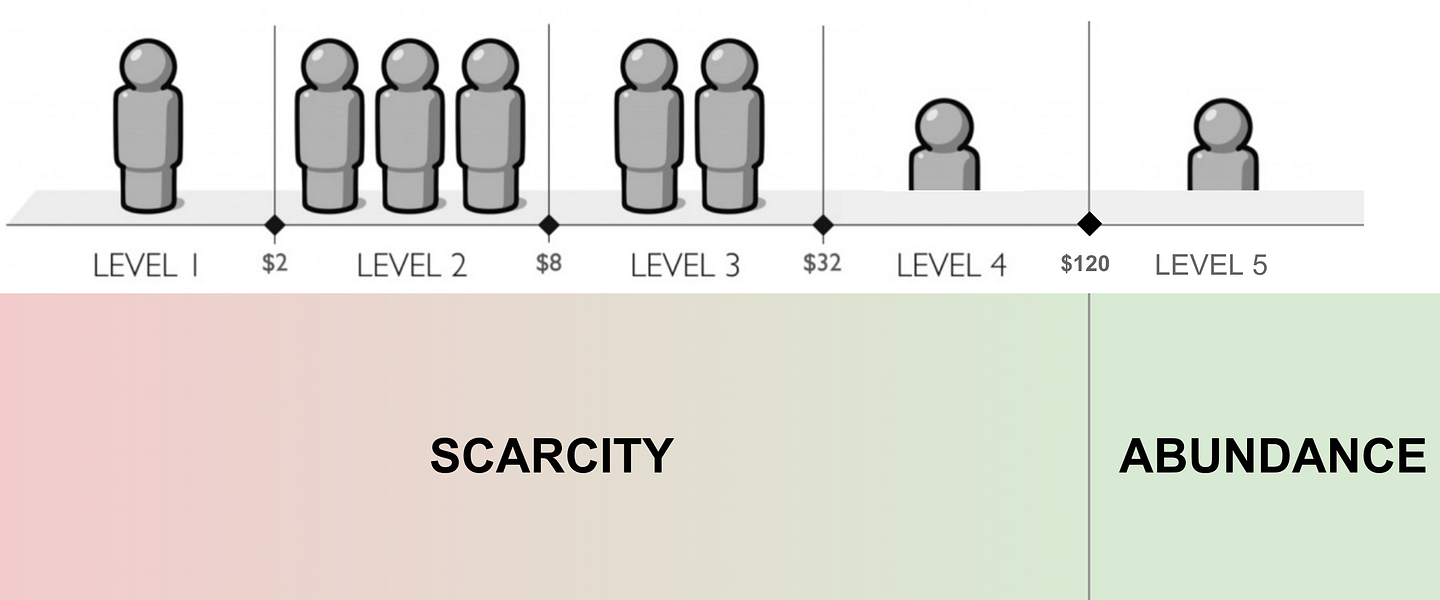
Powering a New Abundance-Based Feedback Loop
Let’s illustrate why this can be helpful by contrasting two kinds of feedback loops: Traditional Accumulation Investment (Scarcity-Based) vs. Egoistic Altruism (Abundance-Based).
We are all familiar with “Traditional Accumulation Investment”. Take some of your income and invest it in something like the stock market. Make 7%/year, compound your investment over time, and retire early. This is a reinforcing feedback loop where the “rich get richer”.
Contrast this to the positive sum “Egoistic Altruism”, a concept proposed by Kurzgesagt in their recent 7min video (watch it!). Egoistic Altruism is a reinforcing loop that is a bit more foreign to us, so it’s worth spelling out:
By giving to those poorer than us, we level them up the economic ladder, making them (and their needs) more “similar” to ours, which both increases the demand for things we want and the supply of those able to produce those wants. As an example, imagine something that you want, like a cure for Alzheimer’s disease (my mom has this disease). If we want to find a cure, then we want both:
- More people to want this too (increased demand). If Level 1 folks were instead Level 2–4, and were surviving longer (through global health programs like malaria bed nets), then they would start to experience Alzheimer’s more (because they’re living longer). This would mean that they would start demanding Alzheimer’s cures, research, etc.
- In addition to the demand, we also want: more people that can produce to meet that demand (increased supply). e.g. If more Level 1 folks were Level 2–4, they might have a better education and could break through the scarcity mindset to think long-term, then they could start contributing to Alzheimer’s research and help develop those cures.
So, giving to Level 1 folks would make me happier because it helps them be more like me (Level 5), increasing the supply and demand for things I want. As Kurzgesagt said in their recent video: “This is what it means to live in a positive sum world. The more people that want the same thing you want, the more likely you are to get it.”
Imagine you’re trying to beat the final dragon boss in some massively multiplayer online game, like World of Warcraft. It’s pretty hard to do it yourself, but becomes a lot easier when you have friends on your side, also battling the dragon with you, sharing their learnings, etc.
Now let’s map this back to Rosling’s levels. Right now, assuming don’t have many “Level 5s giving to Level 1s”, here’s how experts predict people to level up over the next 23 years:
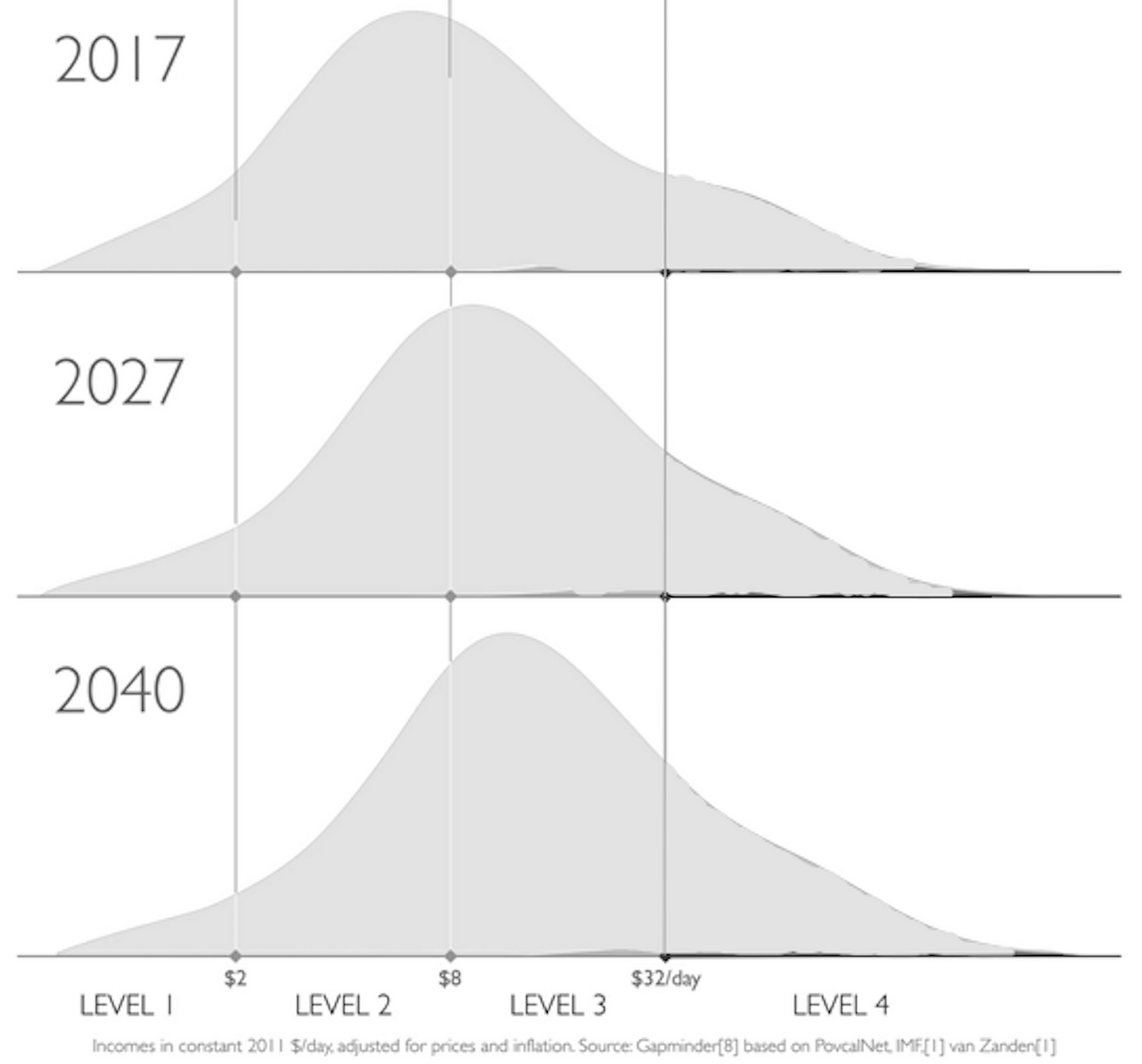
According to these predictions, things will be getting better (classic “Optimists” :). People will continue to move up the levels. But we can likely supercharge this with the Egostic Altruism feedback loop. Instead of Level 5’s continuing to accumulate wealth (which doesn’t make them happier), they can give to Level 1’s, moving them up the levels more quickly, eventually making more Level 5’s, which will then increase supply and demand for Level 5 “SharedOutcomes” (like solving climate change, one of our final bosses). Here’s (roughly) how I imagine the graph instead:

In this scenario, humans progress more quickly up the levels through a Level 5 self-tax mechanism. Instead of lots of folks still stuck in Level 1 and 2 by 2040, most of them have moved up to Levels 3, 4, and 5.
Then, in the end, we want everyone to get to Level 5. At that point everyone will be released from their scarcity mindset and we can work towards long-term SharedOutcomes together.
Rosling’s shift from a 2-level map (developing/developed) to a 4-level map is a good step. However, I think we should use a 5-level map to unleash a feedback loop defined by the positive sum world of Egoistic Altruism.
Thoughts? Please leave them below. Or ping me on Twitter at RhysLindmark.
Disclaimer: The views and opinions expressed in this article are my own and do not reflect my employer :).